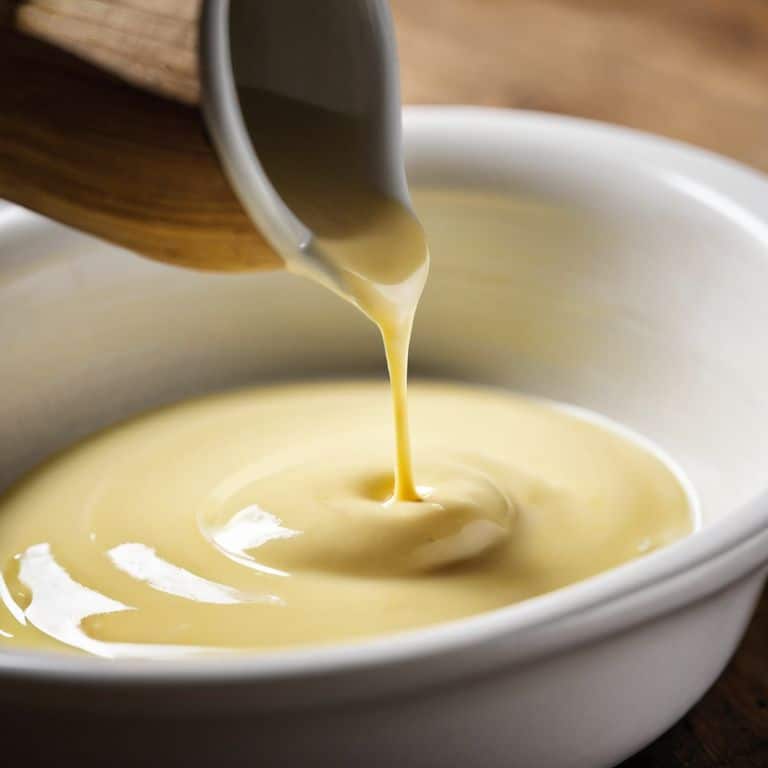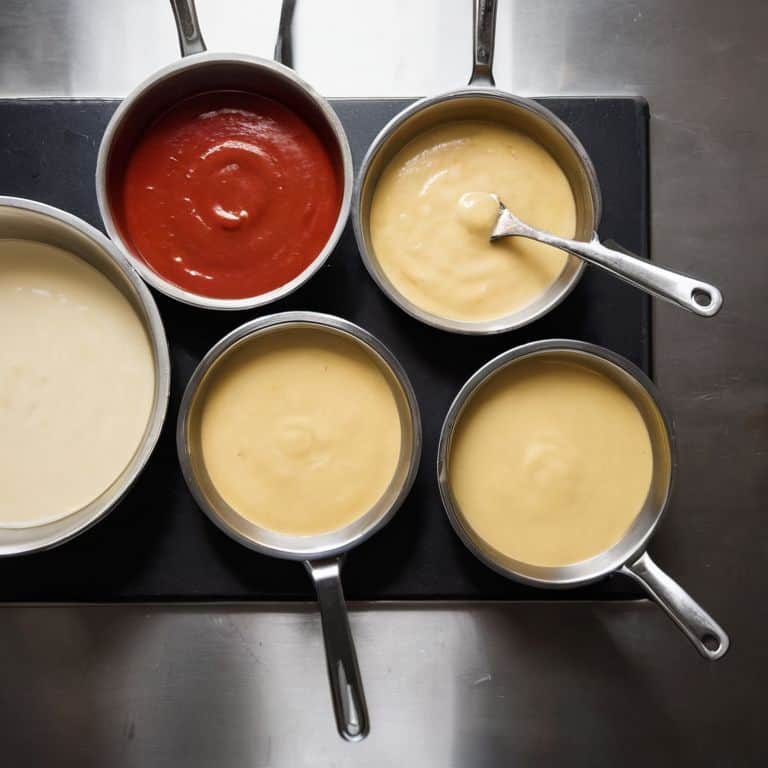As a flight instructor, I’ve seen my fair share of complicated systems, but when it comes to cooking, I believe that what are the five mother sauces shouldn’t be a mystery. In fact, I think the culinary world often overcomplicates this fundamental concept, making it seem like a secret only reserved for professional chefs. I recall a time when I was teaching a student pilot about navigation, and we took a break to discuss our favorite recipes. My student was surprised to learn that I, a former bush pilot, was also an avid cook, and that I believed the principles of flight could be applied to understanding the basics of cooking, including the five mother sauces.
In this article, I promise to cut through the jargon and provide you with a no-nonsense guide to understanding what are the five mother sauces. I’ll share my personal experience and break down the complex topics into simple, easy-to-follow steps, just like I do with my flight students. My goal is to make the fundamentals of cooking accessible to everyone, not just professional chefs. By the end of this article, you’ll have a clear understanding of the five mother sauces and how to apply them in your own cooking, without feeling overwhelmed by complicated recipes or cooking techniques.
Table of Contents
Navigating Mother Sauces

As we delve into the world of mother sauces, it’s essential to understand the french sauce making techniques that form the foundation of classical cuisine. These techniques, passed down through generations of chefs, provide a solid framework for creating a variety of sauces. By mastering the basics of sauce preparation, you’ll be able to elevate your dishes and add depth to your cooking.
One of the key aspects of working with mother sauces is sauce derivate uses in cooking, which allows you to create a multitude of flavors from a single base sauce. This versatility is what makes mother sauces so valuable in the kitchen. By learning how to reduce sauce for intensity and balance flavors, you’ll be able to create rich, complex sauces that complement your dishes perfectly.
To ensure emulsion sauce stability tips are applied correctly, it’s crucial to understand the role of each ingredient in the sauce-making process. By doing so, you’ll be able to create smooth, creamy emulsions that add a touch of elegance to any dish. With practice and patience, you’ll become proficient in preparing mother sauce recipes for beginners, and soon you’ll be experimenting with classical cuisine sauce pairing to create truly exceptional culinary experiences.
French Sauce Making Techniques Demystified
When it comes to French sauce making, many people think it’s a complex process, but I like to compare it to navigating through calm air, where a clear understanding of the fundamentals can make all the difference. By breaking down the techniques into simple steps, anyone can learn to create delicious sauces.
To start, it’s essential to master the roux, a mixture of flour and fat that thickens the sauce. This basic technique is the foundation of many French sauces, and once you’ve got it down, you can experiment with different flavors and ingredients to create your own unique sauces.
Mother Sauce Recipes for Beginners Take Flight
As we explore the world of mother sauces, it’s essential to start with simple recipes that lay the foundation for more complex creations. For beginners, mastering a basic Béchamel or Velouté sauce is a great place to begin. These sauces are the building blocks of French cuisine, and with practice, you’ll be able to whip them up with ease.
When starting out, remember to keep it simple. Don’t be afraid to experiment with different ingredients and flavors, but always maintain a focus on the fundamental techniques that make these sauces shine. With time and practice, you’ll be creating delicious mother sauce recipes like a pro, and your culinary skills will truly take flight.
What Are the Five Mother Sauces

As we explore the world of classical cuisine, it’s essential to understand the foundation of French sauce making techniques. The five mother sauces, also known as the “big five,” are the building blocks of many derivative sauces used in cooking. Emulsion sauce stability is crucial in creating these sauces, as it allows for a smooth and consistent texture. By mastering the art of emulsion, home cooks and professional chefs can create a wide range of sauces to elevate their dishes.
When it comes to reducing sauce for intensity, it’s all about balance and patience. By slowly reducing the sauce, you can concentrate the flavors and create a rich, velvety texture. This technique is particularly useful when working with classical cuisine sauce pairing, as it allows you to create bold and complex flavors that complement a variety of dishes. Whether you’re making a simple tomato sauce or a more intricate hollandaise, the key to success lies in the reduction process.
For those just starting out, mother sauce recipes for beginners can seem daunting, but with practice and patience, anyone can become a skilled sauce maker. By following simple recipes and techniques, such as french sauce making techniques, home cooks can create delicious and authentic sauces to enhance their meals. With time and experience, you’ll be able to experiment with different ingredients and flavor combinations, opening up a world of possibilities in the kitchen.
Classical Cuisine Sauce Pairing Explained
As we explore the world of mother sauces, it’s essential to understand how to pair them with various dishes. Classical cuisine is all about balance and harmony, and sauce pairing plays a significant role in achieving this balance. By combining the right sauce with the right ingredients, you can create a truly unforgettable culinary experience.
To take your sauce pairing to the next level, remember to match flavors that complement each other. For example, a rich demiglace pairs perfectly with a tender cut of beef, while a lighter beurre blanc is better suited for delicate fish dishes. By experimenting with different combinations, you’ll develop a keen sense of how to elevate your dishes with the perfect sauce.
Reducing Sauce for Intensity and Emulsion Stability
When it comes to sauce making, reducing is a crucial step to achieve the perfect consistency and flavor. By cooking down the sauce, we can intensify the flavors and create a richer, more velvety texture. This technique is especially important for emulsion sauces, which can easily break if not reduced properly.
To ensure emulsion stability, it’s essential to reduce the sauce slowly and patiently, allowing the flavors to meld together and the liquid to evaporate gradually. This process helps to strengthen the bond between the ingredients, resulting in a smooth and creamy sauce that will elevate any dish.
5 Essential Checkpoints for Mastering the Five Mother Sauces
- Understand the foundation of each mother sauce, including Béchamel, Velouté, Espagnole, Hollandaise, and Tomate, to create a solid base for your culinary flights
- Practice French sauce making techniques, such as roux preparation and reduction, to demystify the process and ensure consistency in your sauces
- Start with beginner-friendly mother sauce recipes and gradually experiment with variations to build your confidence and skill in the kitchen
- Learn how to pair each mother sauce with appropriate dishes, considering factors like flavor profiles, textures, and presentation to elevate your culinary creations
- Master the art of reducing sauces for intensified flavors and stable emulsions, using techniques like simmering and whisking to achieve the perfect balance and texture
Key Takeaways from Our Culinary Flight
Understanding the five mother sauces is crucial for any aspiring chef, as they form the foundation of countless recipes and can elevate dishes from ordinary to extraordinary
Mastering French sauce making techniques, such as reduction and emulsion, can make a significant difference in the flavor and texture of your sauces, and are essential skills for any serious home cook or professional chef
By applying the principles of sauce pairing and stability, learned from the five mother sauces, you can experiment with new ingredients and recipes, developing your own unique style and taking your cooking to new heights
Understanding the Foundations
Just as a sturdy aircraft requires a strong fuselage, a great dish needs a solid foundation – and that’s exactly what the five mother sauces provide: a culinary framework to build upon, experiment with, and soar to new heights.
Daniel Sato
Landing Gear Down: Concluding Our Journey Through the Five Mother Sauces

As we touch down on our exploration of the five mother sauces, let’s take a moment to review the key points we’ve covered. From French sauce making techniques to the art of reducing sauces for intensity and emulsion stability, we’ve navigated the fundamentals of classical cuisine. By understanding the five mother sauces – Béchamel, Velouté, Espagnole, Hollandaise, and Tomate – you’ve gained a solid foundation in sauce pairing and preparation. This knowledge will serve as your compass, guiding you through the world of culinary exploration.
As you embark on your own culinary adventures, remember that mastering the basics is the first step to creating something truly extraordinary. Don’t be afraid to experiment and add your own flair to these timeless recipes. With practice and patience, you’ll be soaring to new heights in the kitchen, and the world of flavors will be yours to explore. So, go ahead, take to the skies, and bon appétit!
Frequently Asked Questions
What are the basic ingredients and techniques required to make each of the five mother sauces?
To make each of the five mother sauces, you’ll need basic ingredients like stocks, bones, and vegetables, along with techniques such as roux-making, reduction, and emulsification. Think of it like pre-flight checks – we need the right components in place before taking off into sauce-making. Let’s break it down step by step for each sauce.
How do I know which mother sauce to use with different types of protein or dishes?
Think of mother sauces like navigation charts – each one plots a course for a specific type of cuisine or protein. For example, Béchamel pairs well with poultry or fish, while Espagnole complements red meat. Consider the flavor profile you want to achieve and the protein’s natural taste, then choose the mother sauce that’ll enhance it.
Can the five mother sauces be modified or combined to create new and unique flavor profiles?
Just like plotting a new flight route, modifying the five mother sauces offers endless possibilities. By combining or tweaking these foundational sauces, you can create unique flavor profiles that elevate your dishes. Think of it as flying by instruments – you know the basics, now it’s time to navigate new culinary skies.
